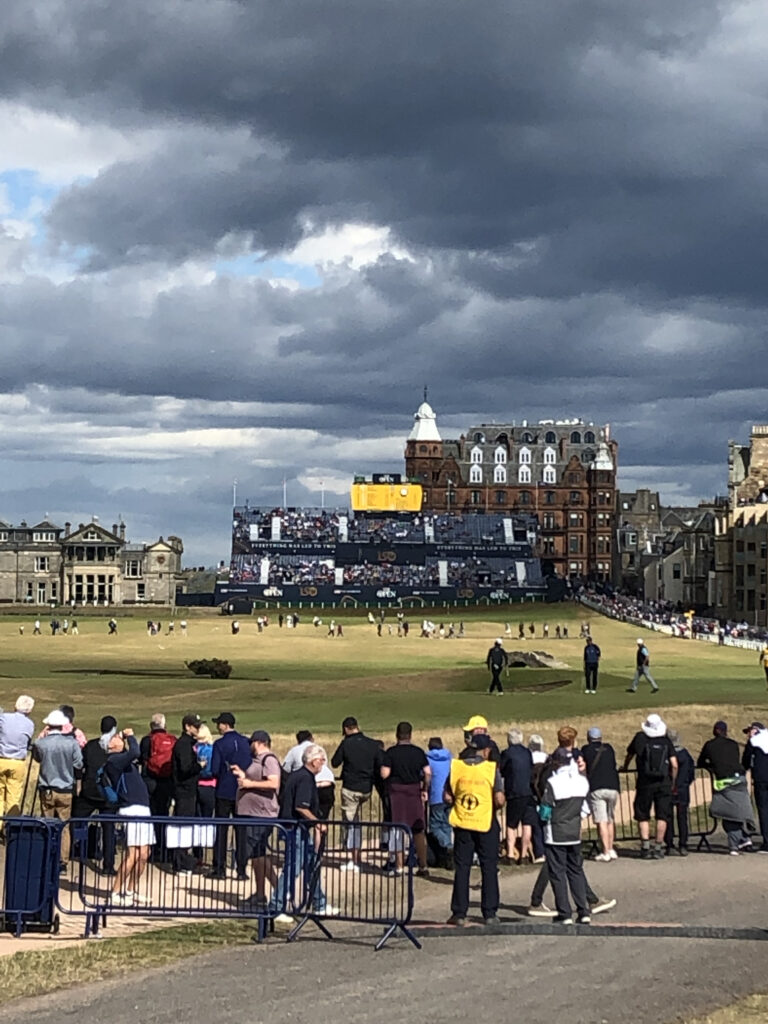On a balmy Sunday evening at St Andrews, 28-year-old Cameron Smith (pictured on the home page) was unflustered by the raucous crowds rooting for the man in the match behind and thus was able to become the first Australian to win the Open Championship since Greg Norman in 1993. As Norman had done that afternoon at Royal St George’s, Smith closed with a 64, in his case largely built on a sensational stretch of five consecutive birdies from the 10th and climaxed with one more at the last. He needed, it too. His playing partner, Cameron Young, had driven the green on the 356-yard 18thand made a 15-footer for an eagle two. But Smith’s short birdie putt gave him a total of 268, 20 under par, one shot lower than Young and two better than ‘the man behind’, Rory McIlroy. He was the 150th Open champion.
From the moment McIlroy holed a bunker shot for an eagle two at the 10th hole on Saturday there had seemed some sense of destiny that he would go on to win his second Open and first major since 2014. But it was not to be. On Sunday he hit all 18 greens in regulation but only managed to make two birdies. Although he held the lead until the 13th hole, he could not make a birdie after the 10th. His scorecard was bogey-free but comparatively birdie-bereft, although the outcome might have been different had he followed the magnificent, towering iron shot he hit on to the 17th green by holing the 18-foot birdie putt he’d left himself. This was McIlroy’s second Open at the Old Course (he was injured in 2015) and his eight rounds have been 63-80-69-68-66-68-66-70. With an 80 on his card in 2010 he had been tied third. With a 70 in 2022 he was third outright. In 2010 he had trailed Louis Oosthuizen by eight. This time he was more narrowly beaten by a guy with a putter hotter than the London weather on the day I’m posting this.

In one respect that 17th green was the difference between the two. Ten minutes before McIlroy missed his birdie, Smith had saved par from a little closer after his third shot, with the putter from off the green, had diced with disaster around the rim of the Road Hole bunker. And while there was no doubt as to who most of the spectators were wanting to win, Smith was not unloved. “I had a lot of support out there, especially the Aussie guys,” he said. “You guys really kept me going. Seemed like there was a lot of you guys. This one’s for Oz.” In stereotypical Aussie fashion, he estimated it would take two cans of beer to fill the famous claret jug – “I’ll probably have 20 claret jugs,” he added.
Leaving St Andrews two days previously with nothing so tangible to celebrate had been Tiger Woods. The possibility that he might challenge to win for a third time at the ‘Home of Golf’ (having played only seven previous competitive rounds this year!) got a hurried rebuff when he hit his second shot into the burn on the opening hole and made six. He was six over par after six holes; nine over after 36. He got a tremendous reception as he walked up the 18th fairway and he doffed his cap as he strode over the Swilcan Bridge – although he never stopped walking, as if he knew this could be goodbye but then again it might not be. “It’s very emotional for me,” he said. “I’ve been coming here since 1995. I think the next one comes around in 2030 [it might in fact be before then] and I don’t know if I will be physically able to play by then. So to me it felt this might have been my last Open at St Andrews.”
Whenever it comes around again, Rory McIlroy will hope he can manage all four rounds in the 60s. And Cam Smith will be hoping he might emulate Tiger Woods and become the second man this century to win back-to-back Opens at St Andrews.
